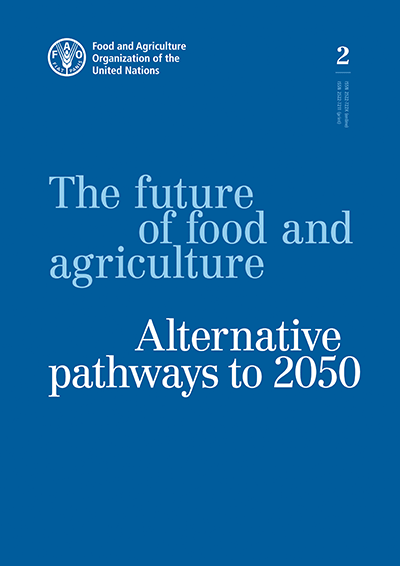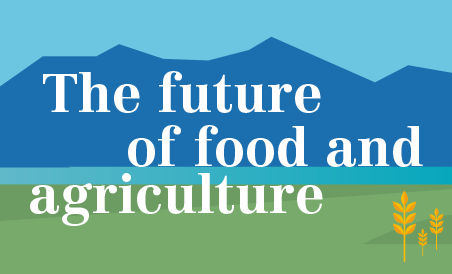Will global food and agricultural systems sustainably satisfy food and non-food agricultural demand?
FAO’s Global Perspectives Studies provide possible answers to this recurring question regarding the future of food and agriculture:
- “Business as usual” is no longer an option if food security, nutrition and sustainable agriculture targets set by the 2030 Agenda for Sustainable Development are to be met.
- Food and agricultural systems face challenges that could jeopardize their future sustainability, such as satisfying increasing demand with tightening natural resources, adapting to and mitigating climate change, or tackling the concentration in fewer hands of capital-intensive, vertically integrated production processes (see The future of food and agriculture – Alternative pathways to 2050).
- FAO foresight exercises provide strategic options to address current and future challenges facing food and agricultural systems and their governance.
The future of food and agriculture
The first issue "The future of food and agriculture – Trends and challenges" analyses the challenges facing food and agriculture in the light of recent socio-economic and environmental trends, while the projections to 2050 of production and consumption under alternative scenarios are discussed in the issue below.
 The future of food and agriculture
The future of food and agriculture
– Alternative pathways to 2050
This report explores three different scenarios for the future of food and agriculture, based on alternative trends for key drivers, including income growth and distribution, population growth, technical progress and climate change.
Building on the report The future of food and agriculture – Trends and challenges, this publication forms part of FAO’s efforts to support evidence-based decision-making processes. It provides solid qualitative and quantitative analysis and sheds light on possible strategic options to achieve the Sustainable Development Goals of eradicating hunger, improving nutrition and ensuring economic, social and environmental sustainability of food and agricultural systems.

